Escape the usual tropical image of Vietnam and experience its surprisingly cool side. Learn when winter in Vietnam arrives, how cold it gets, and the best places to enjoy the unique beauty of the season.
Winter in Vietnam brings a refreshing change with cool temperatures, offering a welcome respite from the summer heat and humidity. From bustling cities to serene highlands, Vietnam's diverse landscape invites travelers to explore its unique charms during this season. Join us as we delve into the wonders of winter in Vietnam.
1. When is the winter in Vietnam?
Winter in Vietnam brings cooler temperatures, especially in mountainous regions such as Fansipan and Mau Son peaks. Winter officially begins at the end of November and lasts until the end of February. December and January are usually the coldest months, sometimes dropping below 0°C (32°F). However, the exact timing can vary slightly depending on region.
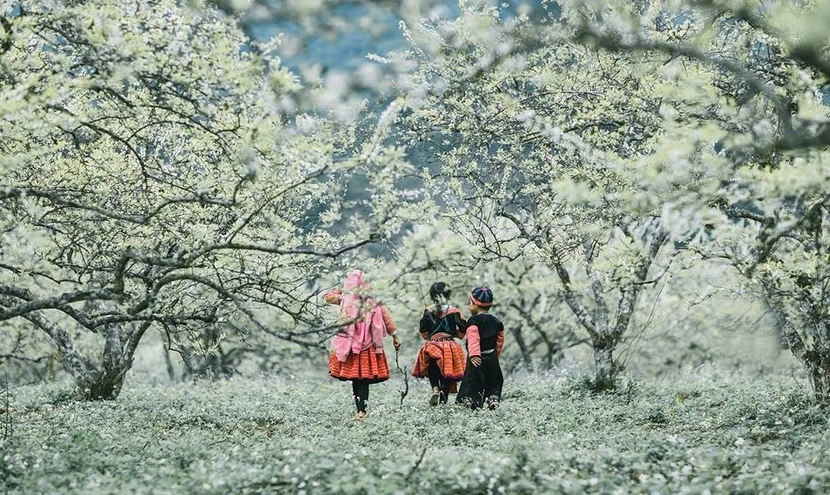
2. How cold is Vietnam in winter?
Vietnam's climate is diverse due to its geographical features, encompassing mountains, coastlines, and tropical islands, each contributing to unique weather patterns.
2.1. How cold is Northern Vietnam Winter?
Winter in Northern Vietnam brings chilly and dry atmosphere, often accompanied by light rain or drizzle and, in some areas, even breathtaking frost or snow. Sapa, for example, is renowned for its cold climate with snowdrops during this season, with temperatures ranging from 0°C to 10°C (32°F to 50°F), while Hanoi experiences similarly chilly weather, with temperatures averaging around 10°C (50°F).
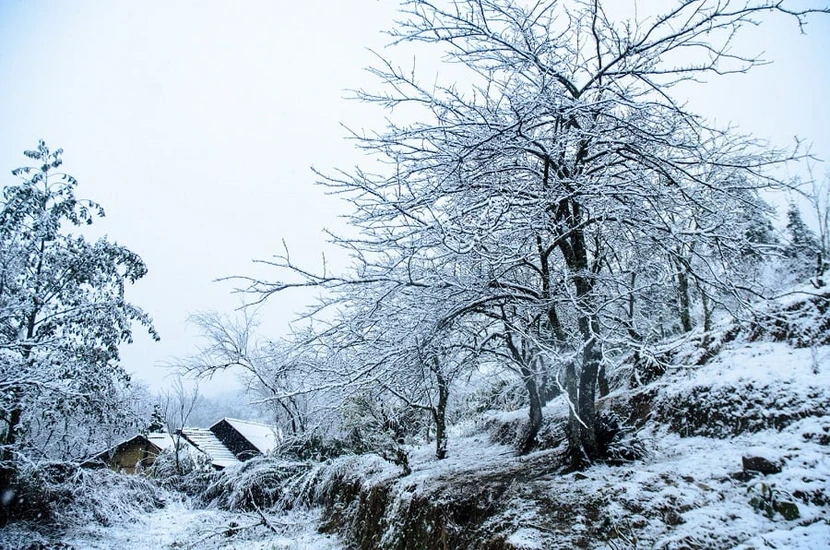
2.2. How cold is Central Vietnam Winter?
Winter in Central Vietnam brings milder temperatures compared to the north, with average temperatures ranging from 15°C to 25°C (59°F to 77°F). Occasional rainfall, wind, and humidity are common in this region, creating a comfortable yet refreshing atmosphere for travelers.
2.3. How cold is Southern Vietnam Winter?
In Southern Vietnam, winter is characterized by dry and sunny conditions, with temperatures typically ranging from 25°C to 30°C (77°F to 86°F). The weather remains warm and pleasant during this season, with minimal impact from winter, making it an ideal destination for those seeking warmer climates and sunny skies.
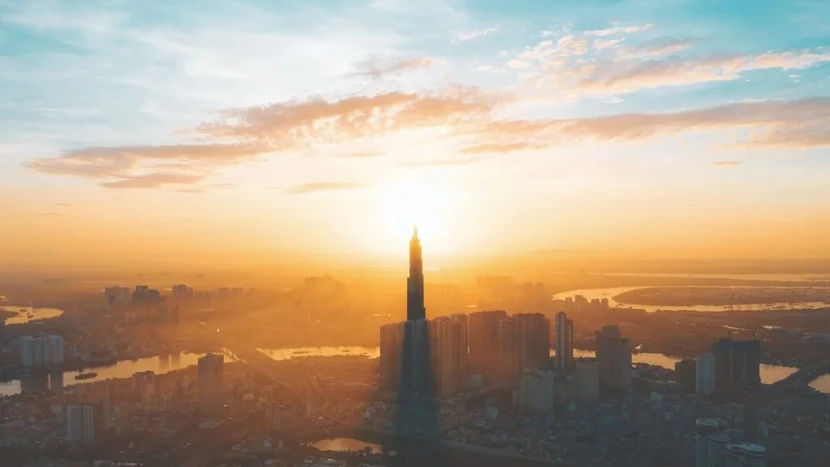
3. Explore Vietnam during the winter season
3.1. Festivals in Winter in Vietnam
Christmas Eve
Christmas Eve is enthusiastically celebrated in major cities like Hanoi and Ho Chi Minh City. On the night of December 24th, the streets bustle with people eager to admire the festive decorations and lights. The “Santa Claus” motorbike rider delivering presents to children has also gained popularity, adding to the joyful atmosphere of the holiday season.
New Year's Eve
Though not celebrated as popular as Tet, New Year's Eve in Vietnam is a vibrant winter festival filled with lively celebrations and a touch of tradition. Cities like Hanoi and Ho Chi Minh City explode with dazzling fireworks displays, while locals and visitors alike flock to countdown parties and celebratory events. For a unique twist, join a cocktail party or enjoy a festive cruise across the iconic Ha Long Bay.
Tet Holiday (Lunar New Year)
Tet, the Lunar New Year, typically falls in January or February. This national holiday officially spans three days, but it's common for celebrations to extend for a week or even 10 days. During traditional Tet festivities, customs like ancestor worship and giving lucky money to children and elders are prominently featured, reflecting the rich cultural heritage of Vietnam.
>> Vietnamese New Year - Welcome The Next Year with Joy and Hope
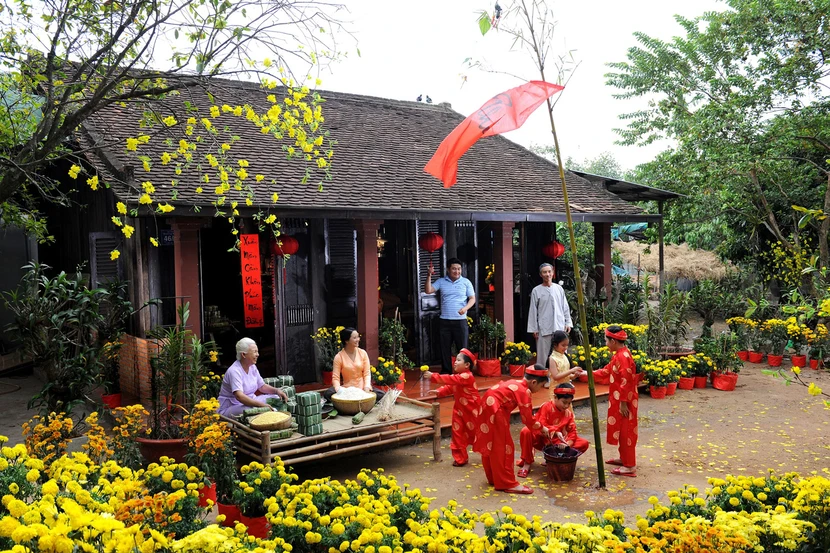
3.2. Food recommendation for winter in Vietnam
Indulge in the comforting warmth of Vietnamese cuisine during the winter months. Treat yourself to steaming bowls of noodles like Pho, Bun Rieu, and Bun Bo Hue. Savor the flavors of Banh Duc Nong, a snack consisting of rice cakes dipped in fish sauce, pork, cilantro, and fried scallions.
Warm up with Chao Suon, a hearty pork ribs congee, or enjoy the sweetness of Banh Troi Tau, a hot sweet ginger soup with rice cakes filled with sesame and topped with coconut and peanuts.
During winter, don't miss out on the simplicity of grilled corn, sweet potato, egg, or Thang Co hotpot's hearty flavors.
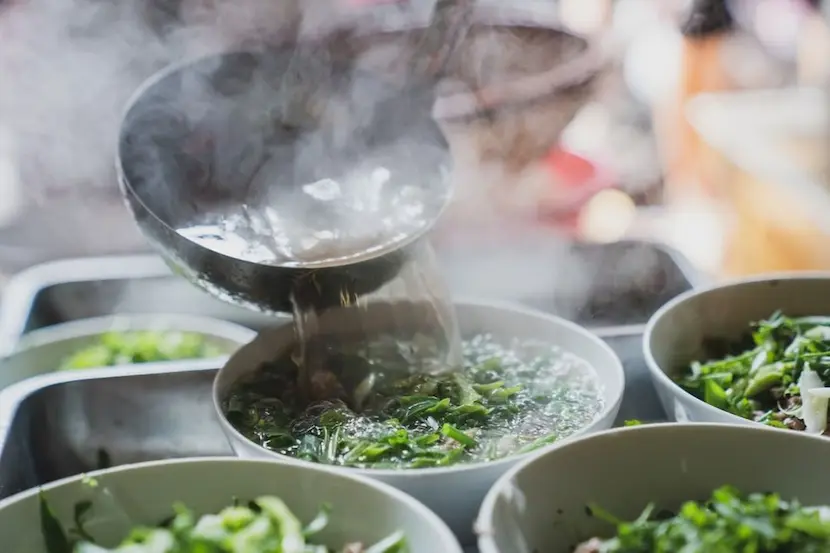
4. Best Places to Experience Winter in Vietnam
During the winter months, many people often plan trips to Northern Vietnam, which is the most prominent region. Meanwhile, others are looking for some beach break in Phu Quoc Island. Here are some popular spots to go:
Sapa
While Sapa is beautiful all year round, winter adds a special charm that visitors won't want to miss. One of the most captivating features of Sapa in winter is the chance to witness snowfall. Traveling to Sapa in January is particularly recommended, as it may allow you to experience the beauty of snowflakes in a tropical country like Vietnam.
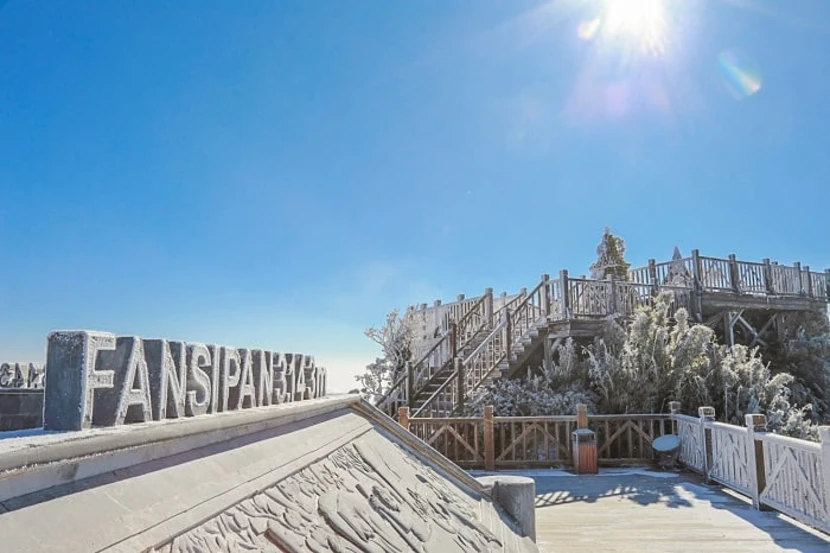
Conquering the Fansipan Peak, the legendary rooftop of Indochina is a must when visiting Sapa in winter. Once accomplished, you'll be rewarded with breathtaking winter scenery below, whether you hike or take the cable car to the peak.
For photography enthusiasts, Sapa is a must-visit destination during winter, as the town's natural beauty is truly breathtaking. Exploring ethnic villages like Cat Cat, Ta Van, and Ta Phin provides a deeper understanding of the Vietnamese lifestyle amidst peaceful hillside settings.
Moc Chau
Visiting Moc Chau during this season allows you to truly appreciate the serene tranquility of the mountains and forests. The temperature drops, sometimes reaching as low as 0°C (32°F), you may even witness the fleeting beauty of snowflakes.

Amidst the cold, you can behold the powerful sight of robust mustard-green fields blooming vibrantly, showcasing their resilience against the harsh weather. Moc Chau is also renowned for its delicate cherry and plum blossoms, which bloom in winter, painting the landscape with hues of pink and white.
Ha Giang
The best time to visit Ha Giang is from October to December when Tam Giac Mach flowers (triangle oat) blossom. An endless number of Tam Giac Mach flowers cover this charming province in light pink, combining with the green color of lush trees of the forested mountains, creating a wonderful picture of Ha Giang.
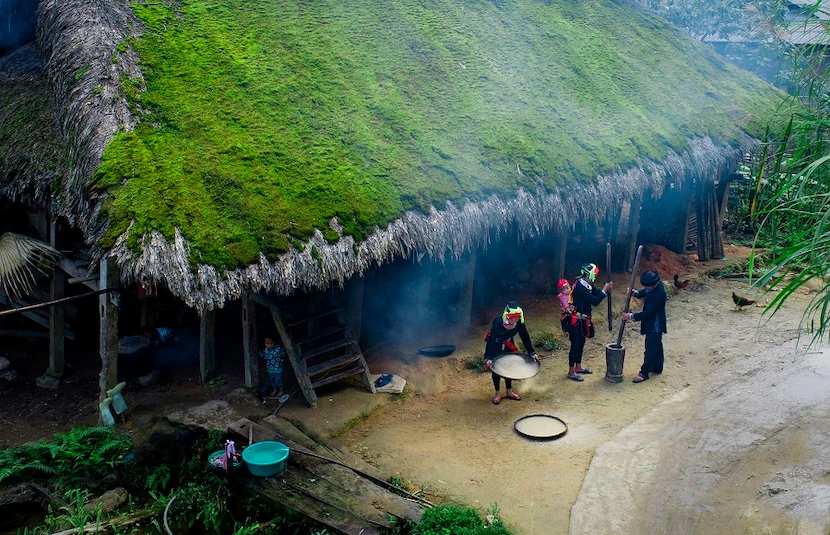
One of the must-visit attractions in Ha Giang during winter is Dong Van Karst Plateau Geopark, a UNESCO Global Geopark. Winter adds an extra layer of charm to this already stunning landscape, as the limestone peaks and valleys are often shrouded in mist, creating a mystic atmosphere.
When visiting Ha Giang, you can taste a diverse range of foods, such as Thang Co, a specialty of the Hmong ethnic minority, with flavors of herbs and citronella, or five-color sticky rice and caltrops soup.
Ta Xua
Tà Xùa is a highland commune in Bac Yen district, Son La province, bordering Yen Bai province. Anyone who visits Ta Xua cannot forget the beauty of the Northwest mountains and the simple, affectionate lifestyle of the people here. The scenery of golden sunlight on the green leaves of the forest, with undulating mountain ranges and white fluffy clouds above.
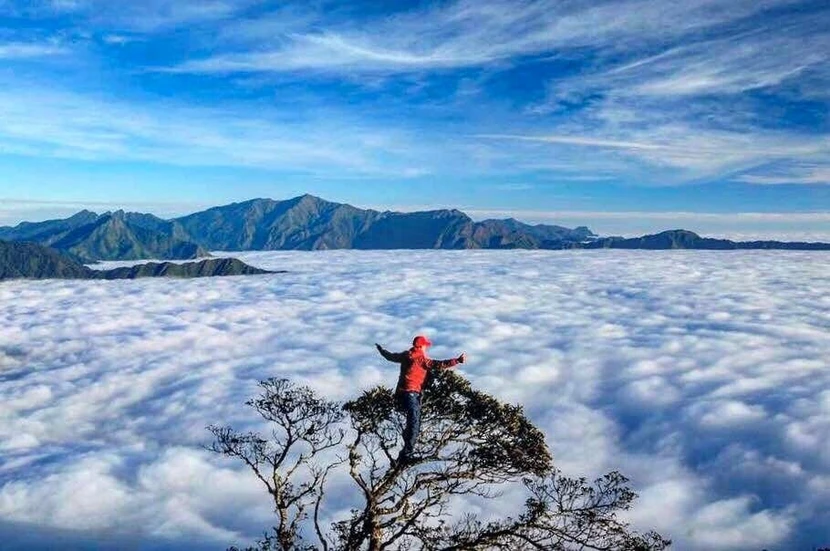
If you are a nature lover, you cannot miss trekking through the pristine forest in Ta Xua Son La Nature Reserve. Crossing small forest trails, exploring winding streams, listening to birdsong, and feeling the moist air of the forest gently embracing you will surely be unforgettable experiences for many travelers.
Mai Chau
Nestled in the heart of Hoa Binh province, Mai Chau is a charming valley offering a unique glimpse into Vietnam's ethnic minority groups such as Thai, Muong, and Tay. In winter, visitors can trek around villages like Lac or Pong Cong, bike to remote areas, or explore Chieu Cave with its stunning stalactites.

Homestaying in rustic stilt houses offers a warm-hearted hospitality experience. Despite the cold and humid weather, Mai Chau has a tranquil atmosphere and natural beauty, including peach and plum blossoms. The wildflowers, green rice fields, and tea hills further enhance Mai Chau's idyllic setting in winter.
Tam Dao
Tam Dao, often called the "Da Lat of the North," is a hidden gem among Vietnam's cold destinations in winter. Named after three majestic mountains - Thien Thi, Thach Ban, and Phu Nghia - Tam Dao offers stunning natural beauty.
During winter, from November to January, mist blankets Tam Dao, creating a romantic and dreamy ambiance for couples. Bac Waterfall adds to the park's allure with its cascading waters. Moreover, Tam Dao National Park boasts eight different forest types and over 800 animal species, making it a haven for nature enthusiasts.
Ha Long Bay
In winter, Halong Bay is calm with little wind, quieter than during the peak season, and you don't have to worry about the rainy season or typhoons canceling your cruises. While you may not be able to participate in water activities like swimming or kayaking, you can still enjoy land activities like hiking and barbecues.

In winter, if you wake up early in Halong Bay, you can easily encounter the charming and familiar images of the local fishing village life. Fishermen often head out to sea for night fishing and return in the early morning, with small boats lining the docks. Smoke rises from the stoves as women in the family cook, while children help the adults.
Phu Quoc Island
Phu Quoc Island transforms into a tropical paradise during winter, making it an ideal escape from the colder weather.
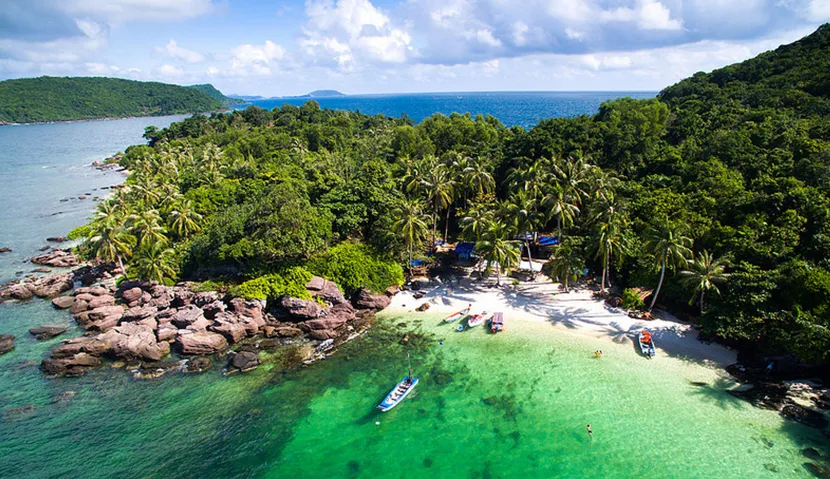
December to March boasts sunshine, warm temperatures (ranging from 22°C to 30°C), and minimal rainfall. Ideal conditions for soaking up the sun on pristine beaches, swimming in the turquoise waters, or trying out water activities.
The dry season makes winter ideal for exploring Phu Quoc's national parks and visiting historical sites like the Phu Quoc Prison. The sea is calm with gentle waves, perfect for kayaking, diving, or snorkeling around Phu Quoc's beautiful coastline. Explore hidden coves, vibrant coral reefs, and colorful marine life.
5. FAQs
What is the coldest month in Vietnam?
December and January are usually the coldest months, sometimes dropping to 0°C (32°F).
Does Vietnam have snow?
Yes, it has. Although not widespread, snow can be found in some areas of Northern Vietnam, such as the peaks of Mt. Fansipan, Ta Xua, and Mau Son Mountains, adding to the region's stunning natural beauty.
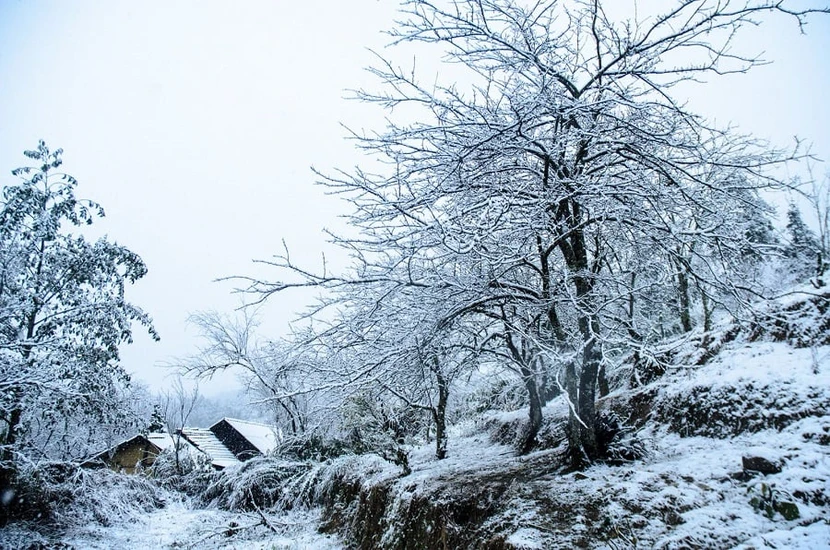
In conclusion, while winter in Vietnam may bring cooler temperatures, it offers travelers a unique and enchanting experience. From the misty mountains of Sapa to the tranquil valleys of Mai Chau, there's no shortage of breathtaking landscapes to explore. So don't waste a moment indoors – there's a world of beauty waiting to be discovered outside during winter in Vietnam.
See the best deals for package tours to Vietnam that are available during the winter season.
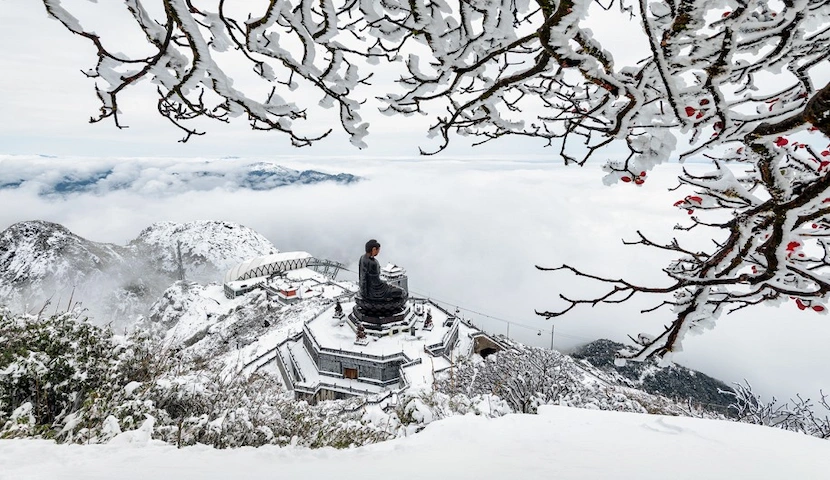







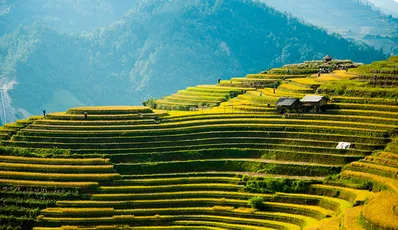
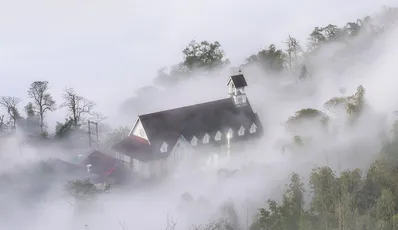
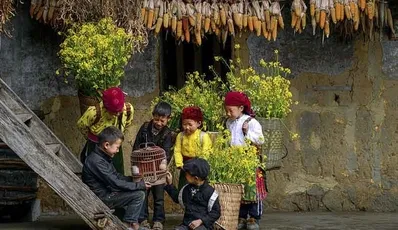
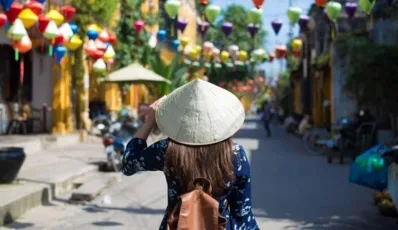

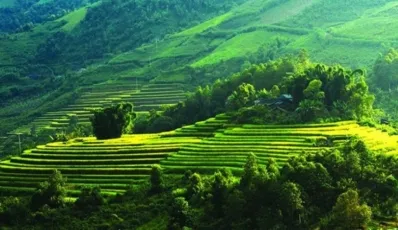
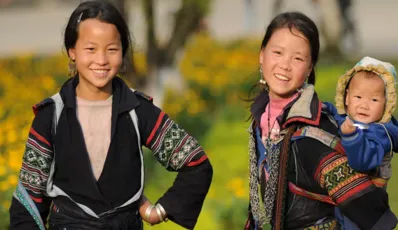

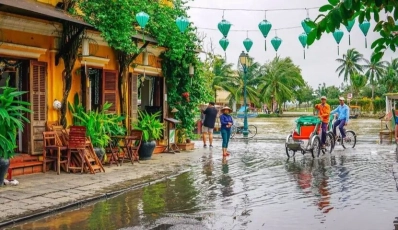




 TRAVELERS' CHOICE 2026
TRAVELERS' CHOICE 2026 


